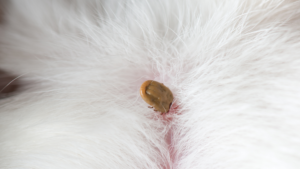What is Addison’s disease?
Addison’s disease, or hypoadrenocorticism, is a hormonal disorder that results in the adrenal glands not producing enough cortisol and aldosterone to maintain normal body function and responses. Cortisol is a hormone that is normally produced by the adrenal glands, especially in times of stress, and is required for many bodily functions including blood pressure. The adrenal glands are made up of two parts; the inner (medulla) part which produces things that aren’t crucial for life and the outer (cortex) part which produces hormones that are crucial for life. The cortex produces two important groups of hormones: mineralocorticoids (such as aldosterone) and glucocorticoids (such as cortisol).
Addison’s disease can be classified as either a primary, or secondary, condition. Primary Addison’s, where the adrenal gland itself is directly affected, can be caused by immune mediated destruction of the glands, or due to certain medications, including the medication used to treat Hyperadrenocorticism (Cushing’s Disease). Secondary Addison’s, where the adrenal gland is indirectly affected and subsequently produces less hormones, may be caused by damage or malfunction to the pituitary gland. This is a small gland inside the head which is responsible for stimulating the adrenal glands to produce hormones. Certain medications also suppress the function of the pituitary gland, particularly when the medications are suddenly stopped.
Who is affected?
Addison’s disease can affect dogs of any age, but it tends to occur in young to middle-aged dogs, from around 2 to 5 years old (PetSure data). While it may affect any breed, there are some breeds more likely to be affected, including Poodles and Terriers.
According to PetSure data in the 2020 calendar year, Addison’s disease was most prevalent in the following breeds:
| Breed | Prevalence |
| Poodle | 0.77% |
| Airedale Terrier | 0.72% |
| Labradoodle | 0.44% |
| Tenterfield Terrier | 0.4% |
| Tibetan Spaniel | 0.36% |
| Whippet | 0.33% |
| Maltese | 0.32% |
| German Short Haired Pointer | 0.28% |
| Great Dane | 0.24% |
| Bull Terrier | 0.21% |
Prevalence = Total number of unique claiming pets / total number of insured pets across 12-month period. Excludes breeds with less than 500 active pet insurance policies.
Signs of Addison’s Disease
Addison’s disease can sometimes be difficult to diagnose as the symptoms can be vague or look like other diseases. Some common signs include vomiting, weight loss, diarrhoea, abdominal pain, and loss of appetite. Weakness or lethargy may also be noted. The signs may come and go intermittently or become progressively worse. Some pets may drink and urinate more than usual or have episodes of shivering or shaking. In an acute episode, known as an Addisonian crisis, pets may collapse and go into shock. This can be brought on by a stressful event or situation.
Management of Addison’s Disease
Diagnosis of Addison’s requires a blood test called an ACTH stimulation test.
An Addisonian crisis is a life-threatening condition that needs emergency treatment. Treatment often involves aggressive intravenous fluid therapy to help to dilute electrolytes in the blood and to ensure the organs are getting enough blood supply. These fluids are generally used in combination with glucocorticoids (steroids) to help supply the body with the hormones it is not producing. Once the pet patient is stabilised, ongoing maintenance is usually required daily to help keep the glucocorticoid and electrolyte balance stable. The medication may also be required before stress to prevent a crisis. Regular visits to the Vet for monitoring are part of the ongoing maintenance for patients with Hypoadrenocorticism.
How much does it cost to treat?
According to PetSure claims data from the 2020 calendar year, the average cost of a single treatment relating to Addison’s disease was $222. The highest cost for a single treatment being $6,296.
Is it covered by pet insurance?
Addison’s Disease may be covered by Comprehensive Accidental Injury and Illness pet insurance policies administered by PetSure (check our brand partners at petsure.gholab.com.au/partners), unless related to a pre-existing condition or exclusion. Please refer to your policy documents including Certificate of Insurance and Product Disclosure Statement (PDS) for more information on whether this condition is covered under your policy.
Disclaimer: Reimbursement for these claims would be subject to limits, such as annual benefit limits or sub-limits, benefit percentage, applicable waiting periods and any applicable excess. Cover is subject to the policy terms and conditions. You should consider the relevant Product Disclosure Statement or policy wording available from the relevant provider.
REFERENCES
- Evans, HE, 1993, Miller’s Anatomy of the Dog, 3RD edition, WB Saunders, New York, USA.
- Feldman, EC & Nelson RW, 2004, Canine and Feline Endocrinology and Reproduction. 3RD edition, WB Saunders, St. Louis, Missouri, USA.
- VIN_Hypoadrenocorticism Accessed 4th June 2021.
Pet insurance can help by covering a portion of the eligible vet bill if the unexpected happens. Because it is difficult to predict the costs of veterinary care, it can help to have measures in place to help prepare for the unexpected. Check out our partner network and explore our policy tools to find a pet insurance policy.
Not all conditions or items are covered by Pet Insurance. Refer to the applicable Product Disclosure Statement for information about coverage and exclusions.








